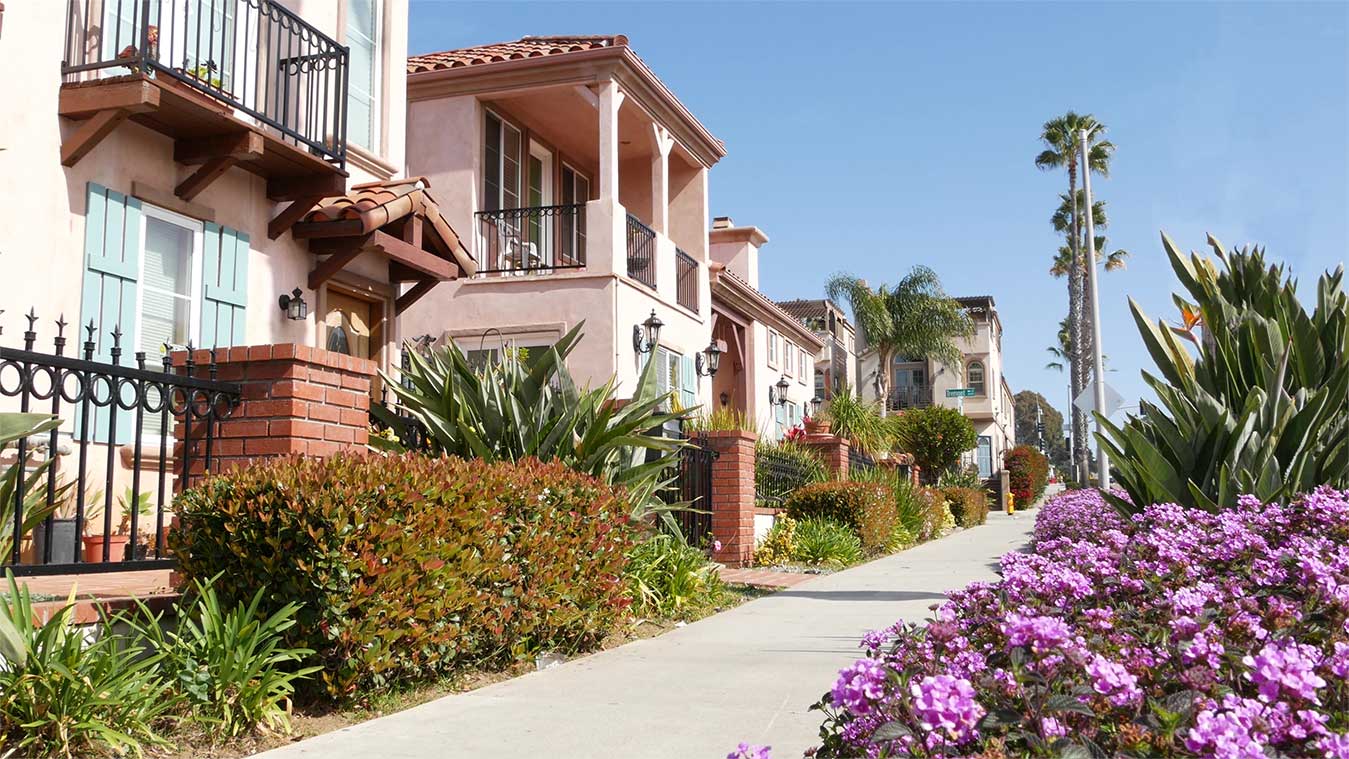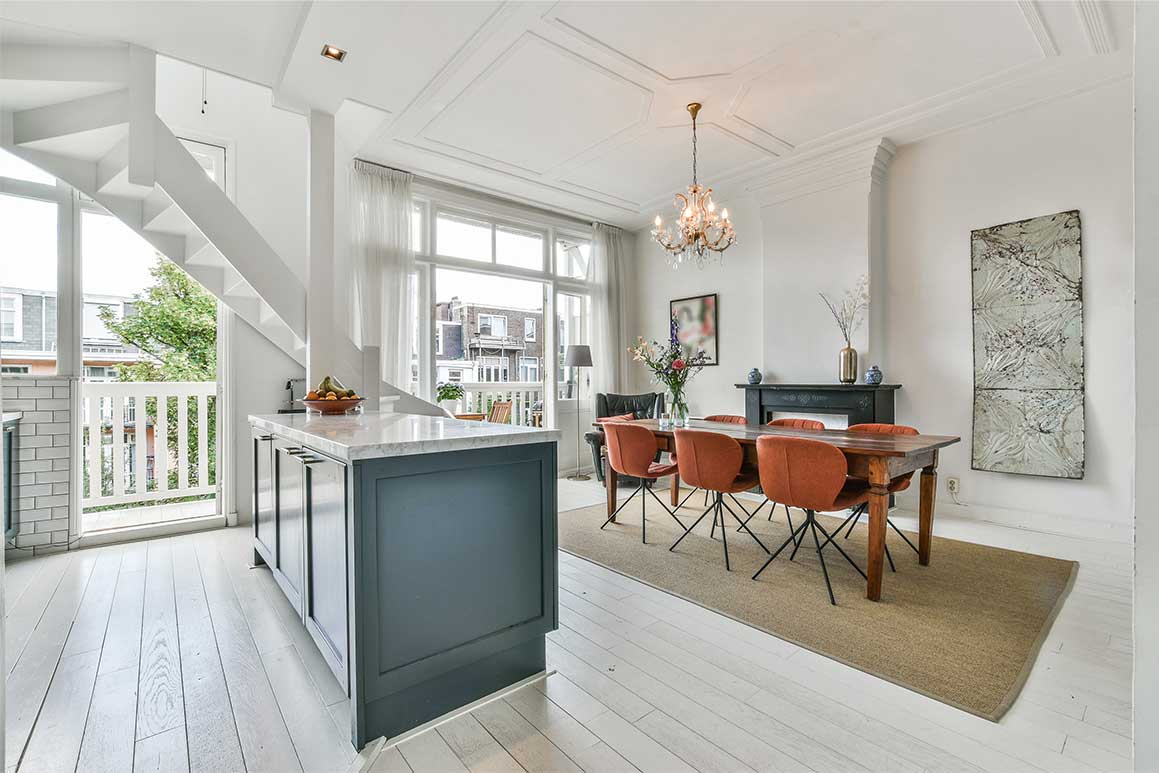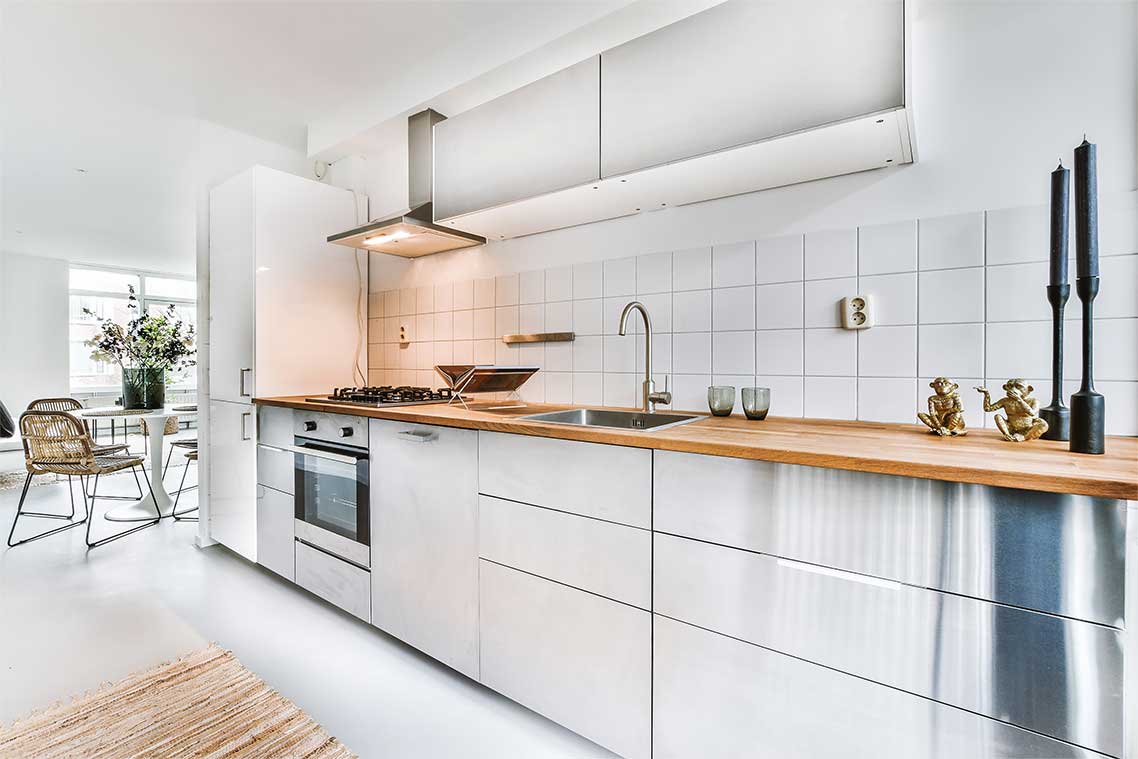 A few weeks ago, we published a blog post on how COVID-19 is impacting the real estate industry. We discussed current trends and changes in the market, and what buyers and sellers might expect moving forward. Despite what’s going on in the world around us, some people have made the decision to continue moving forward with their plans to buy or sell a home.
Everyone’s circumstances are different, and this decision may be beneficial for you despite the health awareness and current economic slowdowns. Real estate agents most likely aren’t making law-breaking decisions; they are getting permission from their brokers, staying up-to-date on the latest COVID-19 laws, and keeping those guidelines in mind as they work with buyers and sellers. However, keeping best practices in mind will ensure you know what to expect and will allow you to make smarter decisions. If you’re hosting an open house, here’s what you can do:
Small Groups
Per the Centers for Disease Control (CDC) guidelines, open house gatherings should have no more than 10 people combined. Spread out visits from potential buyers as best as possible, and sanitize between visits. Pay particular attention to common surface areas, such as cabinets, door knobs, countertops, and faucets. It might be beneficial for your real estate agent to arrange open house “segments” that potential buyers can sign up for to ensure a minimum number of people in the house at any specific point in time.
Communicate your cleansing efforts. Every visitor that comes to your home is well aware of the circumstances surrounding COVID-19. As a host, do your best to put their minds at ease by letting them know how you’re maintaining your property and keeping it sanitized throughout visits. This shows that you’re taking the situation seriously.
You can choose to do this when they come in, and you may even hand out postcards or short flyers that detail your sanitization efforts as well. This added effort and care can go a long way with buyers who are making important decisions. Remember, purchasing a home isn’t just a financial decision; it’s also an emotional one. A good connection with the seller can help a buyer make a decision between two properties they’re struggling to choose between.
Turn on all the lights in the house. This prevents visitors from having to touch light switches as they navigate from room to room. It’s a simple gesture that allows you to minimize touching walls in the household, and keeps other visitors from touching common points in the home again and again.
Create mini disinfectant stations. This will go a long way with your visitors, who will appreciate the thoughtfulness you put into making sure your home and visitors are safe and healthy. Have soap, hand sanitizer, and paper towels ready available. These small disinfectant stations can also create a “watercooler” effect, bringing visitors together for candid conversations.
Offer gloves (and booties if you can). This way, visitors can protect their hands and feet, and your home can remain as germ-free as possible. Some researchers noted that shoes made with synthetic or plastic materials can carry the virus for days, although more research is needed. Although there is currently no conclusive proof that protective footwear can help prevent the spread of COVID-19, it can’t hurt.
Consider alternative or supplemental marketing tactics. Hosting an open house isn’t the only option for sellers. Instead of hosting an open house, you can guide potential buyers through the buyer journey. For example, you might create a detailed virtual tour for YouTube, with a new video exploring each room. Or, you might add more 3D photos to your listing.
Talk to your agent about these in-depth marketing experiences that can help potential buyers in their decision-making and can help cut down on open houses and one-on-one showings.
We hope these open house tips were useful for you, and that you remain healthy and optimistic during these uncertain times.
A few weeks ago, we published a blog post on how COVID-19 is impacting the real estate industry. We discussed current trends and changes in the market, and what buyers and sellers might expect moving forward. Despite what’s going on in the world around us, some people have made the decision to continue moving forward with their plans to buy or sell a home.
Everyone’s circumstances are different, and this decision may be beneficial for you despite the health awareness and current economic slowdowns. Real estate agents most likely aren’t making law-breaking decisions; they are getting permission from their brokers, staying up-to-date on the latest COVID-19 laws, and keeping those guidelines in mind as they work with buyers and sellers. However, keeping best practices in mind will ensure you know what to expect and will allow you to make smarter decisions. If you’re hosting an open house, here’s what you can do:
Small Groups
Per the Centers for Disease Control (CDC) guidelines, open house gatherings should have no more than 10 people combined. Spread out visits from potential buyers as best as possible, and sanitize between visits. Pay particular attention to common surface areas, such as cabinets, door knobs, countertops, and faucets. It might be beneficial for your real estate agent to arrange open house “segments” that potential buyers can sign up for to ensure a minimum number of people in the house at any specific point in time.
Communicate your cleansing efforts. Every visitor that comes to your home is well aware of the circumstances surrounding COVID-19. As a host, do your best to put their minds at ease by letting them know how you’re maintaining your property and keeping it sanitized throughout visits. This shows that you’re taking the situation seriously.
You can choose to do this when they come in, and you may even hand out postcards or short flyers that detail your sanitization efforts as well. This added effort and care can go a long way with buyers who are making important decisions. Remember, purchasing a home isn’t just a financial decision; it’s also an emotional one. A good connection with the seller can help a buyer make a decision between two properties they’re struggling to choose between.
Turn on all the lights in the house. This prevents visitors from having to touch light switches as they navigate from room to room. It’s a simple gesture that allows you to minimize touching walls in the household, and keeps other visitors from touching common points in the home again and again.
Create mini disinfectant stations. This will go a long way with your visitors, who will appreciate the thoughtfulness you put into making sure your home and visitors are safe and healthy. Have soap, hand sanitizer, and paper towels ready available. These small disinfectant stations can also create a “watercooler” effect, bringing visitors together for candid conversations.
Offer gloves (and booties if you can). This way, visitors can protect their hands and feet, and your home can remain as germ-free as possible. Some researchers noted that shoes made with synthetic or plastic materials can carry the virus for days, although more research is needed. Although there is currently no conclusive proof that protective footwear can help prevent the spread of COVID-19, it can’t hurt.
Consider alternative or supplemental marketing tactics. Hosting an open house isn’t the only option for sellers. Instead of hosting an open house, you can guide potential buyers through the buyer journey. For example, you might create a detailed virtual tour for YouTube, with a new video exploring each room. Or, you might add more 3D photos to your listing.
Talk to your agent about these in-depth marketing experiences that can help potential buyers in their decision-making and can help cut down on open houses and one-on-one showings.
We hope these open house tips were useful for you, and that you remain healthy and optimistic during these uncertain times.

Tips for Hosting Open Houses Amidst COVID-19
By Mclain Properties Wednesday, April 29, 2020
 A few weeks ago, we published a blog post on how COVID-19 is impacting the real estate industry. We discussed current trends and changes in the market, and what buyers and sellers might expect moving forward. Despite what’s going on in the world around us, some people have made the decision to continue moving forward with their plans to buy or sell a home.
Everyone’s circumstances are different, and this decision may be beneficial for you despite the health awareness and current economic slowdowns. Real estate agents most likely aren’t making law-breaking decisions; they are getting permission from their brokers, staying up-to-date on the latest COVID-19 laws, and keeping those guidelines in mind as they work with buyers and sellers. However, keeping best practices in mind will ensure you know what to expect and will allow you to make smarter decisions. If you’re hosting an open house, here’s what you can do:
Small Groups
Per the Centers for Disease Control (CDC) guidelines, open house gatherings should have no more than 10 people combined. Spread out visits from potential buyers as best as possible, and sanitize between visits. Pay particular attention to common surface areas, such as cabinets, door knobs, countertops, and faucets. It might be beneficial for your real estate agent to arrange open house “segments” that potential buyers can sign up for to ensure a minimum number of people in the house at any specific point in time.
Communicate your cleansing efforts. Every visitor that comes to your home is well aware of the circumstances surrounding COVID-19. As a host, do your best to put their minds at ease by letting them know how you’re maintaining your property and keeping it sanitized throughout visits. This shows that you’re taking the situation seriously.
You can choose to do this when they come in, and you may even hand out postcards or short flyers that detail your sanitization efforts as well. This added effort and care can go a long way with buyers who are making important decisions. Remember, purchasing a home isn’t just a financial decision; it’s also an emotional one. A good connection with the seller can help a buyer make a decision between two properties they’re struggling to choose between.
Turn on all the lights in the house. This prevents visitors from having to touch light switches as they navigate from room to room. It’s a simple gesture that allows you to minimize touching walls in the household, and keeps other visitors from touching common points in the home again and again.
Create mini disinfectant stations. This will go a long way with your visitors, who will appreciate the thoughtfulness you put into making sure your home and visitors are safe and healthy. Have soap, hand sanitizer, and paper towels ready available. These small disinfectant stations can also create a “watercooler” effect, bringing visitors together for candid conversations.
Offer gloves (and booties if you can). This way, visitors can protect their hands and feet, and your home can remain as germ-free as possible. Some researchers noted that shoes made with synthetic or plastic materials can carry the virus for days, although more research is needed. Although there is currently no conclusive proof that protective footwear can help prevent the spread of COVID-19, it can’t hurt.
Consider alternative or supplemental marketing tactics. Hosting an open house isn’t the only option for sellers. Instead of hosting an open house, you can guide potential buyers through the buyer journey. For example, you might create a detailed virtual tour for YouTube, with a new video exploring each room. Or, you might add more 3D photos to your listing.
Talk to your agent about these in-depth marketing experiences that can help potential buyers in their decision-making and can help cut down on open houses and one-on-one showings.
We hope these open house tips were useful for you, and that you remain healthy and optimistic during these uncertain times.
A few weeks ago, we published a blog post on how COVID-19 is impacting the real estate industry. We discussed current trends and changes in the market, and what buyers and sellers might expect moving forward. Despite what’s going on in the world around us, some people have made the decision to continue moving forward with their plans to buy or sell a home.
Everyone’s circumstances are different, and this decision may be beneficial for you despite the health awareness and current economic slowdowns. Real estate agents most likely aren’t making law-breaking decisions; they are getting permission from their brokers, staying up-to-date on the latest COVID-19 laws, and keeping those guidelines in mind as they work with buyers and sellers. However, keeping best practices in mind will ensure you know what to expect and will allow you to make smarter decisions. If you’re hosting an open house, here’s what you can do:
Small Groups
Per the Centers for Disease Control (CDC) guidelines, open house gatherings should have no more than 10 people combined. Spread out visits from potential buyers as best as possible, and sanitize between visits. Pay particular attention to common surface areas, such as cabinets, door knobs, countertops, and faucets. It might be beneficial for your real estate agent to arrange open house “segments” that potential buyers can sign up for to ensure a minimum number of people in the house at any specific point in time.
Communicate your cleansing efforts. Every visitor that comes to your home is well aware of the circumstances surrounding COVID-19. As a host, do your best to put their minds at ease by letting them know how you’re maintaining your property and keeping it sanitized throughout visits. This shows that you’re taking the situation seriously.
You can choose to do this when they come in, and you may even hand out postcards or short flyers that detail your sanitization efforts as well. This added effort and care can go a long way with buyers who are making important decisions. Remember, purchasing a home isn’t just a financial decision; it’s also an emotional one. A good connection with the seller can help a buyer make a decision between two properties they’re struggling to choose between.
Turn on all the lights in the house. This prevents visitors from having to touch light switches as they navigate from room to room. It’s a simple gesture that allows you to minimize touching walls in the household, and keeps other visitors from touching common points in the home again and again.
Create mini disinfectant stations. This will go a long way with your visitors, who will appreciate the thoughtfulness you put into making sure your home and visitors are safe and healthy. Have soap, hand sanitizer, and paper towels ready available. These small disinfectant stations can also create a “watercooler” effect, bringing visitors together for candid conversations.
Offer gloves (and booties if you can). This way, visitors can protect their hands and feet, and your home can remain as germ-free as possible. Some researchers noted that shoes made with synthetic or plastic materials can carry the virus for days, although more research is needed. Although there is currently no conclusive proof that protective footwear can help prevent the spread of COVID-19, it can’t hurt.
Consider alternative or supplemental marketing tactics. Hosting an open house isn’t the only option for sellers. Instead of hosting an open house, you can guide potential buyers through the buyer journey. For example, you might create a detailed virtual tour for YouTube, with a new video exploring each room. Or, you might add more 3D photos to your listing.
Talk to your agent about these in-depth marketing experiences that can help potential buyers in their decision-making and can help cut down on open houses and one-on-one showings.
We hope these open house tips were useful for you, and that you remain healthy and optimistic during these uncertain times.





